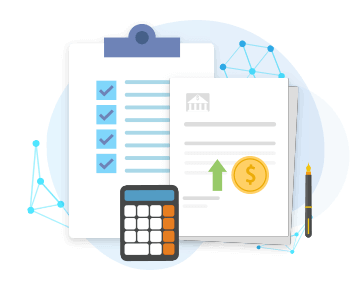How Data Integration and Connectivity Enable Accounts Receivable Success

Accounting professionals who manage Accounts Receivable (AR) frequently face the responsibility of pursuing debt collection. All businesses suffer when accounts go unpaid, and small businesses especially can be dragged down by partners who stretch out payment periods and stunt inbound cash flow. Beyond the annoyance of delayed or uncertain revenue, unpaid AR may indicate more fundamental problems with business relationships.
Accountants tasked with collections face two distinct data integration and automation challenges:
- Collection requires comprehensive reporting and visibility across multiple platforms
- Manual tasks slow down the collection process and invite the risk of errors
First, effective debt collection requires robust reporting solutions to maintain visibility into AR. However, AR involves many software solutions that need to communicate tightly with each other -- including dedicated accounting platforms, payment processing systems, and (possibly multiple) reporting or analytics solutions. Without an appropriate emphasis on data connectivity, AR data spread across these systems may not provide a cohesive picture regarding when and where debt collection is necessary.
The second challenge that accounting professionals face when managing AR is that collections efforts involve a frustrating number of manual processes like keying data, checking for payments, and pursuing overdue accounts. As businesses grow and their income streams diversify, these manual processes devolve into an expensive, time-consuming, and frustrating mess. Sophisticated data integration solutions alleviate this problem by leveraging automation to ensure that finance teams only need to perform manual intervention when necessary.
Register for our free webinar (Thursday, February 10th at 2pm ET) to learn more about digital transformation in accounting software!
AR Reporting Depends on Data Connectivity and Integration
The relationship between AR and payment processing all but guarantees that organizations will need to integrate with multiple systems for debt collection. Without dedicated connectivity solutions like those provided by CData, accountants may need to manually compare the information from payment systems with the accounts registered in their accounting software. This poses a significant problem for generating reports that span payments and AR ledgers. Without an integrated solution, accountants will need to perform manual data entry or face the possibility of reporting errors resulting from siloed information.
Many popular accounting platforms do not natively provide adequate collections reporting functions. As a result, finance teams may prefer to generate reports in a dedicated reporting or analytics tool like PowerBI or Looker Studio (formerly Google Data Studio). Introducing yet another software solution into the AR picture multiplies the possibility that data fragmentation gets in the way of effective reporting and, therefore, practical collections efforts.
CData's connectivity tools support AR processes by ensuring that data from each software solution integrates easily with other systems. With CData technologies, accountants no longer need to manually key in data or compare records. Instead, users can generate reports in dedicated reporting platforms with full access to the critical data in accounting ledgers and payment records. Not only does this save time and effort, but it drastically cuts down the risk of reporting errors that could lead to embarrassing or expensive mistakes in the debt collection process.
How AR Benefits from Data Automation
At its core, debt collection involves applying straightforward business logic:
- Accounts are compared to payment records,
- Outstanding accounts are sent an email or a phone call,
- A timeline is maintained for determining when escalated intervention may be necessary.
Straightforward business processes like these are prime candidates for automation. For example, automated data pipelines ensure that date comparisons never slip through the cracks, that data follows standardized escalation processes, and that accountants are only alerted and drawn into the process when something out of the ordinary occurs.
However, data automation depends on the data connectivity described in the previous section. For example, to effectively understand when accounts are overdue, the data from account ledgers and payment records must be interconnected and available. Integrating the data from each software solution involved in AR management allows for an automation platform to gain a comprehensive view of AR data without manual intervention from finance teams. Combining data connectivity and data automation frees accounting professionals from performing repetitive, menial tasks and significantly decreases the possibility of human error in routine AR tasks.
CData Arc provides an integration and automation platform to support finance and accounting teams by implementing flexible business logic that automates routine debt collection processes. For example, a data pipeline built in CData Arc can pull data from an accounting platform, a payment processing platform, and invoice records to determine when an account qualifies for collections efforts. CData Arc can automatically fire off emails to the customer or alert team members when a critical amount of time has elapsed and escalation may be necessary.
With data integration and automation, accounting teams no longer need to bear the burden of these routine AR necessities.
To learn more about how CData Arc can help you streamline your accounting processes, improve reporting, and free up resources, join us for a free webinar on Thursday, February 10 at 2pm ET. Ready to try CData Arc for yourself? Get a free trial today.





